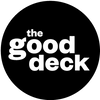What is it?
A design scavenger hunt is a creative exercise where participants are tasked with finding or collecting a specific set of items, ideas, or elements related to a design project or creative challenge. It is a fun and engaging way to encourage creative thinking, gather inspiration, and generate new ideas.
Observing and analyzing design elements used in different contexts can help you find new ways to tell stories, write copy, layout slides, and visually organize information. For example, if we explore packaging design at a specialty or boutique food store, we can learn how to organize information effectively and create visually appealing layouts. We can also discover persuasive writing techniques that resonate with specific target audiences. By studying how key selling points are presented in clear and visually appealing ways, and how everything works together to grab attention and inspire action, we can develop our own unique approach to storytelling and messaging.
You can use the scavenger hunt activity at any stage of the presentation design process, from brainstorming to final polishing. It's a great way to break out of creative ruts and discover new approaches to verbal and visual communication.
When to use it1. When you're feeling stuck or uninspired in your writing or design process. 2. As a way to generate fresh and unique solutions to common challenges. 3. As a team building activity to kick-off a new project and encourage creative thinking. |
Remember to:1. Take notes and photos of found design elements. 2. Set clear boundaries for the scavenger hunt, including the time limit, areas to be explored, and elements to look for. For a less structured inspiration gathering activity, see the Creativity Walkabout. |
How it works
1 |
Define the objective: Determine the purpose of the scavenger hunt and what you hope to achieve by doing it. Are you looking to spark creativity, build teamwork, or improve communication skills? Identifying the objective will help guide the rest of the planning process. |
2 |
Choose a location: Select a location that offers a diverse range of design elements to explore. This could be a city center, a museum, a shopping district, or any other location with an abundance of design inspiration. |
3 |
Create a list of items: Define a set number of items that can be found within the allotted time. These items should be diverse in nature and can include anything from advertisements and signage to architecture and nature. |
4 |
Set a time limit: Determine the amount of time allotted for the scavenger hunt. This can range from a few hours to a full day, depending on the complexity of the items and the location. |
5 |
Gather tools: Get what you need to document findings, such as cameras, notebooks, post-its, and pens. |
6 |
Divide into teams: Divide participants into teams of two or more, depending on the size of the group. Encourage participants to work together and share their insights and ideas. |
7 |
Review and share At the end of the scavenger hunt, gather everyone together to review the findings and share insights. This is a great opportunity for participants to learn from each other and discover new ideas. |
Remember that this activity can be done solo as well, just adapt to suit your individual goals and interests. It's also a great opportunity to partner with other designers in your area for a team-building and/or networking activity.

